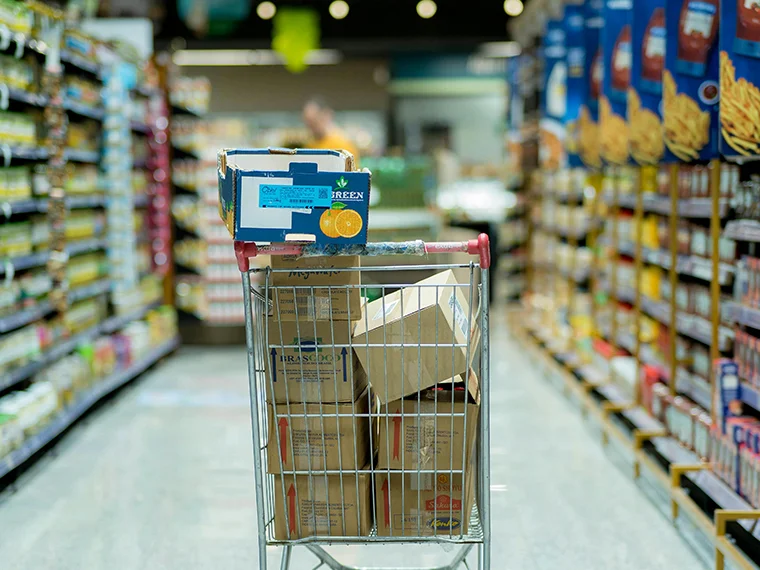Mastering Quality: A Guide to Consumer Goods Inspection for Global Traders

In the modern global marketplace, where supply chains span continents and customer expectations are higher than ever, ensuring product quality has become a central concern for all stakeholders. Whether you are sourcing consumer electronics from Shenzhen, home textiles from India, or toys from Vietnam, the risk of quality failure during production or upon delivery is real—and costly. This is where consumer goods inspection becomes essential. Quality issues can lead to shipment delays, customer complaints, product recalls, legal liabilities, and irreversible brand damage. With competition only a click away in the e-commerce era, maintaining consistency and reliability in your product offerings is not just good practice—it's a competitive necessity. Thorough inspection protocols help detect issues early, enforce supplier accountability, and prevent defective products from entering the market. For companies committed to long-term success, investing in a robust consumer goods inspection process is a strategic decision that pays dividends across production, logistics, and customer satisfaction.

The Scope of Consumer Goods Inspection
The term consumer goods inspection encompasses a wide array of activities designed to evaluate the quality, compliance, and condition of products before they reach the end user. These inspections apply to finished goods and are usually conducted at specific milestones: before production, during production, and before shipment. The goal is to ensure that every product conforms to the buyer's specifications, complies with market regulations, and meets safety and functional expectations.
Consumer goods include a vast and diverse range of products, and each category comes with its own unique inspection needs:
-
Textiles and apparel require checks for stitching quality, sizing accuracy, fabric composition, and color fastness.
-
Electronics must be tested for functionality, electrical safety, compatibility with local voltages, and compliance with certification standards such as CE, UL, or FCC.
-
Toys and children's products demand special attention to choking hazards, material toxicity, and mechanical safety.
-
Furniture and décor inspections focus on structural integrity, surface finish, load-bearing capacity, and packaging security.
-
Kitchenware and tableware are checked for sharp edges, food-grade materials, dishwasher safety, and proper labeling.
An effective consumer goods inspection program takes into account the product's end use, its target market's regulatory framework, and the buyer's quality expectations, thereby serving as a critical control point in international trade.
Core Elements of an Effective Consumer Goods Inspection
An efficient consumer goods inspection process is built on three pillars: scientific sampling, comprehensive checklists, and reliable execution. Below are the core elements that make inspections robust and defensible.
A. AQL-Based Sampling
The Acceptable Quality Limit (AQL) standard determines how many units to inspect from a batch and what level of defects is considered acceptable. It provides a statistical method to balance inspection cost with product risk. In consumer goods inspection, applying AQL ensures consistency and reliability in defect identification.
For example, in a batch of 2,000 clothing items, an inspector may randomly test 125 units. If more than 7 minor defects or 2 major defects are found, the batch may be rejected or require 100% re-inspection. AQL levels vary depending on product category and client tolerance. High-risk products (e.g., children's products or electronics) often require tighter AQL thresholds.
B. Functional, Performance, and Safety Testing
Inspection protocols must go beyond visual checks and include real-use simulation. This is particularly vital for:
-
Home appliances: Testing for heating, cooling, or power efficiency.
-
Furniture: Checking load-bearing capacity, edge smoothness, and joint strength.
-
Toys: Simulating drop tests, torque tests on small parts, and testing for toxic materials.
-
Apparel: Measuring shrinkage after washing, color fastness, and seam strength.
These tests help prevent consumer complaints, warranty claims, and product returns. A meticulous consumer goods inspection program always includes functional verification to validate product usability and safety.
C. Packaging and Label Verification
Packaging plays a critical role in protecting the product and communicating key information. Inspectors ensure:
-
Boxes and materials meet durability standards (drop, compression, moisture).
-
All labeling complies with destination country laws (e.g., “Made in China,” CE mark, recycling symbols).
-
Product manuals and safety leaflets are clear and translated appropriately.
-
Barcodes scan correctly and are aligned with inventory systems.
Improper packaging can lead to goods being damaged, lost, or rejected at customs. A complete consumer goods inspection process leaves no room for labeling or packaging errors, protecting both the buyer and the end user.
Benefits of Consumer Goods Inspection for Global Buyers
In today's interconnected marketplace, a robust consumer goods inspection framework delivers far-reaching advantages to businesses across the supply chain. From brand image to bottom-line performance, its impact is tangible and measurable.
One of the primary benefits is risk mitigation. Inspection helps identify defects, inconsistencies, and deviations before products are shipped. This early intervention prevents reputational harm and reduces the need for costly recalls, customer refunds, or product reworking. For consumer-facing brands, especially those operating on e-commerce platforms, minimizing return rates through superior product quality can significantly enhance profit margins.
Another key advantage is regulatory compliance. Different markets impose strict safety and labeling standards. Through consistent consumer goods inspection, businesses ensure that products meet necessary local and international certifications—avoiding customs delays, fines, or confiscation.
Customer satisfaction also sees a direct uplift. Products that are inspected and approved offer a more consistent user experience, helping brands earn positive reviews, repeat purchases, and greater customer loyalty. Furthermore, detailed inspection reports enhance transparency and improve communication with suppliers, setting clear expectations and improving supply chain efficiency.
In essence, incorporating a well-managed consumer goods inspection program transforms quality control from a defensive measure into a strategic asset.
In a world where brand trust can be built or broken with a single poor customer experience, quality assurance is paramount. A comprehensive consumer goods inspection strategy helps businesses stay ahead of quality issues, build stronger supplier relationships, ensure regulatory compliance, and deliver exceptional value to their customers. From pre-production to post-shipment, inspection processes safeguard each step of the supply chain. They protect businesses from reputational risks, financial losses, and legal complications, while also elevating product credibility and consumer trust. By integrating consumer goods inspection into daily operations, businesses demonstrate a commitment to excellence that resonates across global markets. Whether you're a sourcing manager, brand owner, or retailer, leveraging professional inspection services is a proactive investment that fosters sustainable growth and long-term success in international trade.
https://www.topinspection.net/Consumer-Goods.html
www.topinspection.net
TOP International Inspection Service Co., Ltd.


